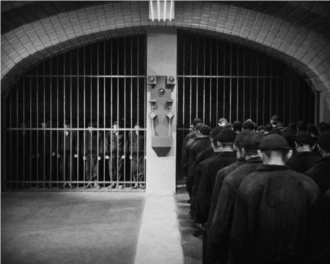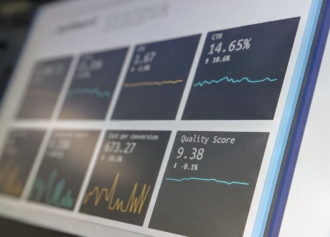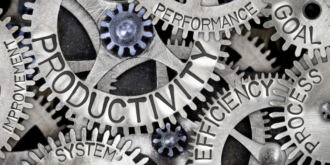Mind time and clock time are two totally different things, according to Adrian Bejan, a mechanical engineering professor at Duke University. In fact, actual time doesn’t affect how we experience its passing.
In an upcoming paper in the European Review, he explains that our perception of time is influenced by the quick, involuntary eye movements (called saccadic eye movements) that we make as our brains process visual information.
As we age, mental image processing slows, which, ironically, creates the sense that time is moving faster. Our culture, language, technology, tasks, and the level of power we feel in our lives also influence our perception of time.
Studies show, for instance, that we feel like time moves faster when we’re engaged in pleasurable or rewarding activities. And, according to researchers at the University of California at Berkeley, when a person’s sense of power increases, so does their sense of control over time.
But, our experience of time goes beyond just its passing. How we perceive time directly affects our level of happiness. That’s why effective time management is more than a path to better work; it’s an essential part of living a more fulfilling life.
The value of a time-first mindset
In 2016, researchers from the University of Pennsylvania and the University of California, Los Angeles (UCLA) asked more than 4,400 people a simple question:
Would you rather have more time or more money?
Two-thirds of respondents said they’d prefer to have more money than more time. But it was the minority (those who valued more time over money) who were happiest with their lives.
“The research is unambiguous: people who value time more than money are happier and more productive,” researchers Ashley Whillans and Hanne Collins write about their results.
Shifting to a time-first mindset, however, doesn’t come naturally to many of us. That’s partly due to the multiple factors that influence our perception of time, and partly due to brain wiring. A $10,000 raise is easy to understand; calculating the value of an extra 30 minutes isn’t so simple.
“It is clear that however the brain counts time, it has a system that is very flexible,” explains Claudia Hammond, author of Time Warped: Unlocking the Mysteries of Time Perception.
“It takes account of [factors like] emotions, absorption, expectations, the demands of a task and even the temperature.”
Hammond continues:
“The precise sense we are using also makes a difference; an auditory event appears longer than a visual one. Yet somehow the experience of time created by the mind feels very real, so real that we feel we know what to expect from it, and are perpetually surprised whenever it confuses us by warping.”
Yet, our desire to experience time differently is one thing we all seem to share in common.

The state of “flow” is highly prized in Silicon Valley because it allows our sense of time to fall away — creating the kind of competitive advantage that comes with focused, singular productivity. Studies show that being late not only bothers us, but also makes us feel psychologically unsafe. And one of our most common regrets, at the end of life, is feeling that we wasted time.
“Time can be a friend, but it can also be an enemy,” says Hammond.
“The trick is to harness it, whether at home, at work, or even in social policy, and to work in line with our conception of time.”
Becoming conscious of our time
In a recent poll, David Finkle, business coach and co-author of Scale: Seven Proven Principles to Grow Your Business and Get Your Life Back, found that leaders typically spend 21.8 hours a week doing activities that add little value to their business. These include tasks like social media, irrelevant emails, interruptions that could have been handled by somebody else, putting out preventable fires, or sitting in non-productive meetings.
“If more than two decades of coaching business owners has taught me anything, it’s that we really do have all the time we need,” says Finkle. “It’s just hidden inside the time that we’re wasting.”
Harnessing time requires a shift in consciousness. First, we need to understand where it goes — and why. To explore how we actually spend our days, technical writer Ivana Isadora Devcic recommends a period of active or passive time tracking.
Active time tracking, she explains, requires manual input, and can range from a handwritten journal to apps like Toggl or SaveMyTime, or even scheduled reminders at regular or random intervals. The passive approach, alternatively, can use apps like RescueTime, which runs in the background and automatically collects data about your online activities.
Organizing time by value
Entrepreneur Noah Kagan, founder of the e-commerce platform Sumo, suggests breaking downtime according to the value of our tasks.
To determine the value of a task, Kagan uses a table provided by digital marketing consultant Perry Marshall in his book 80/20 Sales and Marketing. For example, running errands is a $10 task, while solving a customer problem is $100. Planning your day or writing sales copy, in contrast, might be worth $1,000, and negotiating a big deal, $10,000.

Once you’ve determined the value of specific tasks, Kagan suggests color-coding your calendar to indicate how much time you spend in each value range. Afterward, you can decide what you need to adjust in order to focus on more high-value tasks.
“This new system forced me to be honest about how valuable specific tasks were,” writes Kagan.
“A phone call where I was building a valuable partnership or developing culture might be $1,000 or $10,000 per hour work. On the other hand, ‘busy’ work which I do to keep myself distracted wasn’t worth anything… and it was now staring me right in the face.”
Organizing time by energy level
Innovation coach Sebastian Martin suggests tracking our energy levels, instead of our time.
“We are managing our time, assuming that we are equally effective throughout the day — even though we know we are not,” Martin writes. “Instead, start to observe your energy levels throughout the day and change schedules, meetings and work accordingly.”
Martin also outlines a three-step process:
1. Track your energy levels:
Mark the times of the day when you have higher energy, lower energy, and periods of relaxation.
2. Organize tasks by energy level:
- During high-energy: Remove distractions like email and non-verbal communication to focus on creative work, make difficult decisions, plan, experiment, think, reflect, and learn.
- During low-energy: Menial tasks, like answering emails and messages, can easily be tackled now.
- During relaxation: We can optimize our relaxation by choosing activities that truly re-energize us.
3. Balance out the levels:
Tweak as you go, according to your specific goals and lifestyle.
Organize time by “real income”
Should you buy the nonstop flight and save two hours or get the flight with a stopover and save $90? How about paying a local teenager $20 to mow your lawn so you have an extra free hour on the weekend?
James Clear, an entrepreneur and author of the book Atomic Habits, says it’s difficult to quantify the value of time, because “most of life is lived in the gray zone of the time-value spectrum.” To better quantify our time, he created a process to track how much an hour of your time is truly worth.
To better evaluate how we spend our time, Clear recommends the following steps:
- Track time spent earning money: The first step is to measure the total amount of time we invest to earn money, not just the hours we are physically at work.
- Track money earned: Track your annual income, either by adding up your paychecks or, if you’re a freelancer, by estimating from last year’s income.
- Divide your total money earned (Step 2) by your total time spent (Step 1): By accounting for all of the time we invest to earn money, we can better understand what our time is actually worth. As Clear points out, it’s usually much less than what we would charge for an hour of on-the-job work.
- Create a filter: With the calculations above, you can quickly and accurately estimate what your time is worth. Now we can narrow the zone of uncertainty and make better decisions. For example, Clear says, if you know your time is worth $25 per hour, then you should never wait in line for 30 minutes to get a $10 gift card. If your time is worth $60 per hour, then you should always pay $49 for shipping instead of spending an hour at the store.
Managing by Contribution
According to Marilyn Paul and David Peter Stroth, co-founders at Bridgeway Partners, there are four key functions of leadership: mobilizing commitment, thinking strategically, building relationships and community, and organizing for action. These domains represent the spiritual, mental, emotional, and physical realms of strong leadership.

Many leaders, they say, are stuck in unproductive “phantom work” — the tasks that pile up when we either take ineffective short cuts or avoid essential tasks.
Phantom work is time-consuming and includes activities like rework, upset customers in need of additional services, ongoing internal conflict, long, unproductive meetings, and lengthy sign-off processes. While leaders are doing these avoidable tasks, Paul and Stroth point out, they’re not leading effectively.
Ultimately, the first step toward freeing up our time is to clarify our purpose.
“Knowing your purpose and the goals of your organization enables you to identify the unique contributions you can make,” write Paul and Stroth.
Once we’ve clarified our purpose, they recommend that we identify 1–3 main goals on which to focus our work. Once we know how our habits influence our time, we can look at the cultural, organizational, and personal pressures that influence our workload, and clear out what doesn’t serve our goals.
Clarity = fulfillment
Shifting my relationship with time hasn’t just changed how I work; it has also helped me to redefine my values and beliefs. It has clarified my purpose. And, it’s allowed me to seek out and create more fulfilling experiences for myself — and for those around me.
As Noah Kagan writes,
“Time is the base currency of life. If you have more time, you can convert it into anything you want.”















































































































Send Comment: